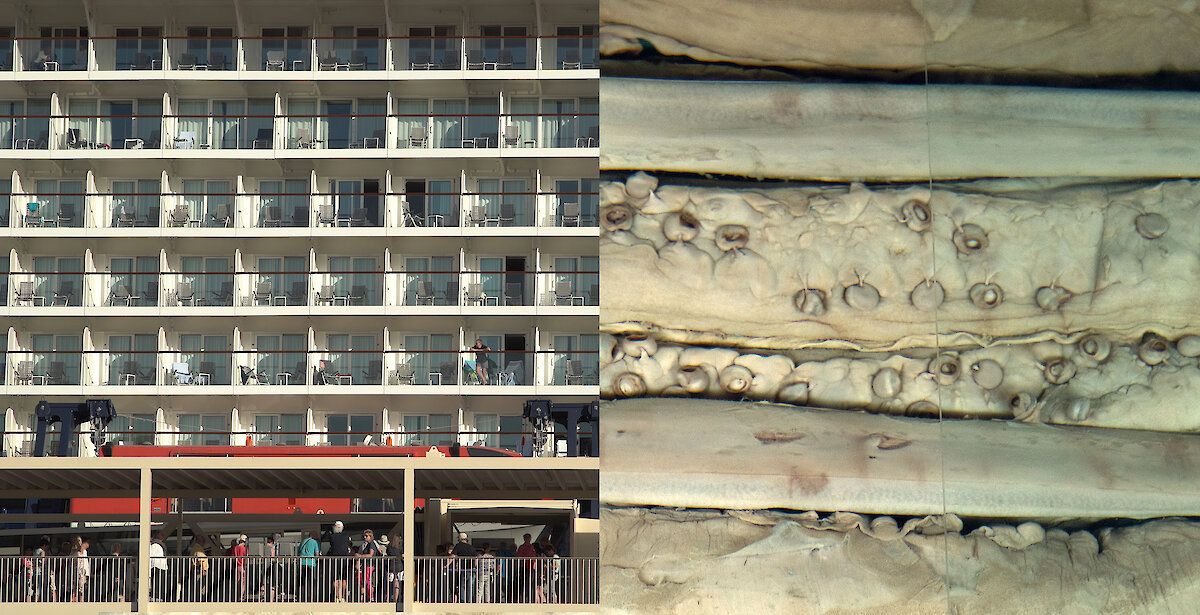Irene de Andrés
14 / 17

The Kraken
There is a threat that roams the ocean depths, something unknown, monstrous, and lethal. The Greeks called it Hydra, with three regenerating heads; in Japan, the ship-sinking entity is known as Umibōzu; in Norse mythology, the god Thor faced the colossal sea serpent of Midgard; in the Old Testament, it was named Leviathan.
Among them, there is also the Kraken, described as a species by Erik Pontoppidan in his Natural History of Norway (Copenhagen, 1755) as a giant squid the size of a floating island.
All these dark monsters have left a significant mark on literature and cinema, from 20,000 Leagues Under the Sea and A Diabolical Invention to The Sunken City and Pirates of the Caribbean. In all these stories, one can hear the fear and uncertainty of humans facing the unknown. An echo that dates back to the early commercial adventures that crossed the Mediterranean and multiplied across all oceans. People were exposed to risks in their colonial and pre-capitalist mission—obtaining raw materials and labor while opening new markets— where every accident or disappearance was explained by fantastic interventions and the heroism of those who returned was adorned with battles against the colossal.
Behind all the sea fables and legends, one can trace the reality of a global exploitation story. Just like the truth about the Kraken: the magnapinids that inhabit depths of over 2,000 meters, giant squids with eight arms and up to 6.4 meters in length. Currently, the National Oceanic and Atmospheric Administration (NOAA) recognizes twelve documented contemporary sightings in the abyssal waters.
The fear of the sea and the belief that it was inhabited by mysterious forces began to dissipate during the 19th century, a time when, with romanticism, the endless horizon became a place of escape and desire. It was the era of hygienist theories that recommended sea baths for the upper classes, both on the coast and aboard comfortable ships. Cruises were one of the symbols of the technological advancement of the Industrial Revolution for the use of another consequence of development: leisure and tourism. In the 20th century, beaches and cruises became popular as their mass exploitation began.
These ships, floating cities loaded with tourists and, like the Kraken, the size of an island, currently transport up to 18 million people per year, who in just one week produce up to eight tons of garbage in addition to the use of fossil fuels and the discharge of other toxic waste. In a study conducted by Univision Noticias and the School of Journalism at Columbia University, the thousands of irregularities in this sector, both in terms of environmental, legal, and labor issues, accumulate in the hands of three companies located in tax havens.
Irene de Andrés, who explores the relationships between capitalism, fascism, and leisure in her artistic practice, presents us with the image of this modern steel monster that directly threatens the existence of the animal Kraken and also jeopardizes the overall balance of coexistence on the planet as an arm of the socio-economic system.
While the UN includes the conservation and sustainable use of oceans in its Agenda, its analysis only mentions fishing and pollution, failing to name the shipping lobby as one of the major predators. It is not only a threat to underwater life. Its activities, the movements of massive, short-term but highly frequent tourists, directly impact the sustainability of the coasts and cities where they dock.

